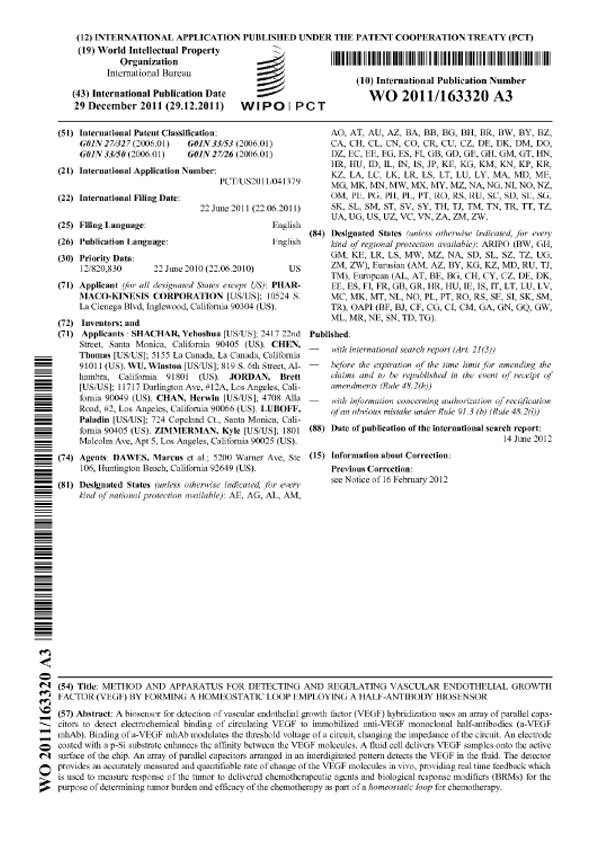PATENTS
Method And Apparatus For Detecting And Regulating Vascular Endothelial Growth Factor (VEGF) By Forming A Homeostatic Loop Employing A Half-Antibody Biosensor
Patent Number: WO 2011/163320 A3
Date Filed: December 29, 2011
Country Filed In: USA
Product Application: VEGF Biosensor
Description:
A biosensor for detection of vascular endothelial growth factor (VEGF) hybridization uses an array of parallel capacitors to detect electrochemical binding of circulating VEGF to immobilized anti-VEGF monoclonal half-antibodies (a-VEGF mhAb). The binding of a-VEGF mhAb modulates the threshold voltage of a circuit, changing the impedance of the circuit. An electrode coated with a p-Si substrate enhances the affinity between the VEGF molecules. A fluid cell delivers VEGF samples onto the active surface of the chip. An array of parallel capacitors arranged in an interdigitated pattern detects the VEGF in the fluid. The detector provides an accurately measured and quantifiable rate of change of the VEGF molecules in vivo, providing real-time feedback which is used to measure the response of the tumor to delivered chemotherapeutic agents and biological response modifiers (BRMs) for the purpose of determining tumor burden and efficacy of the chemotherapy as part of a homeostatic loop for chemotherapy.
Field of Use: The VEGF biosensor is part of Josh Shachar's exploration into developing next-generation biosensors that are capable of detecting specific biomarkers within a sample at clinically relevant levels in a simple portable point-of-care-device that can provide physicians and healthcare workers rapid and affordable pathogen detection without the need for a dedicated lab and specialized technicians and all the associated cost therein. As described, the VEGF biosensor would be targeted to helping physicians treating cancer tumors with chemotherapeutics to be able to measure biological response modifiers (BRMs) for the purpose of determining treatment efficacy.

